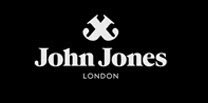
How to put on a show at a pop up space
I’ve just taken down a 3 man exhibition I organized at a pop up space – The Framery, a disused office just off Hoxton Square. The show featured myself and 2 fellow painters that and was open for two weeks in the lead up to Christmas. The show, ULTRAMEGAOK came about after an invite from my girlfriend’s landlord to a private view in a small office on the ground floor of one of his properties. From the moment I walked in I was captured by the space which felt more like a New York loft space than an office, with white wooden floor boards, white brick work and retro chandeliers. Thankfully the owner has been very kind and let artists use the space at no cost which is fantastic especially when many people are willing to spend around £1000 a week to rent a gallery. In the current financial climate landlords may be willing to just cover business rates and bills as they can save money by not paying empty property rates – there is some good advice for approaching landlords on the Art Quest website. The government and local councils now have funds which can be applied for to use against the cost of rates and general show cost to inject life into Britain’s high streets, so with the right approach and backing there are deals to be done.
The disadvantage of using a pop up space is that you have to be very proactive to get people to visit and can’t rely on a galleries PR, the art going public wouldn’t be used to seeing exhibitions in these spaces. While we had a great location, just off a busy road, we still found it tough to get passers by coming in. A-boards and flyering certainly helps but nothing beats a window space onto a high street. We printed flyers, which if they hadn’t been delayed by a week, would have been put in all the small galleries, bars and cafés in the surrounding area, because of the delay most of our PR was electronic. We did mail outs to our contacts and listed the show on many art listing sites (such as Art Rabbit) and art blogs. One of the sites I approached, Murmur Art sent a reviewer down who gave us a great write up which helped get us more people through the door and will also look good on the CV.
The private view was very busy and we had a good flow of people throughout the run even with poor weather conditions outside and setbacks, all the feedback was very positive and the hang looked great. Since the landlord started letting artists use the space he’s now found new tenants to move in to the office in the New Year.
If there could be more people like this, not only would more artists take advantage of these empty spaces but also landlords would probably let their spaces far quicker, after all who wants to take over a dark dirty windowed space (except the artists of course!)
Some recent examples of pop up shows, both independent and commercial -
Shop at 34 – Covent Garden
Decima – West end show
http://www.murmurart.com/news/what-happens-after-the-ball
Phaidon Piccadilly shop -
http://www.run-riot.com/PopUpPhaidon
Andy Wicks
Andy Wicks is a John Jones Artist Surfaces consultant and a practicing artist.
http://www.andywicks.co.uk


















